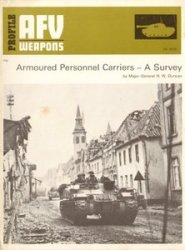SS Brigadier General Schmelt, who later became a governing president in Oppeln, had been ordered back to Germany by Himmler after Upper Silesia was annexed. He was ordered to set up work sites for arms factories and army repair shops which would use foreign workers, especially Jews.
Schmelt created shops and small work camps in closed-down factories in the Silesian area and in the cities of Upper Silesia. After workers were done working, they returned to their homes or to the ghetto.
These work places and the arms factories were under the command of Schmelt, who also provided the guard details. In general, the guards came from the police and the SS. (he workers, other than those from the concentration camp, were paid a decent wage.
The revenues from this work were put into a special fund which the governor of Upper Silesia could use for other projects. I do not know how the money was used.
As far as I recall, Schmelt employed over 50,000 Jews. I do not know how many Poles and Czechs were included in this number.
When Himmler issued the extermination order in the summer of 1941, the entire Schmelt organization was forced to dissolve all work camps and work places. The Jews were supposed to be transported to Auschwitz. But because of the constant complaints from the army and from the arms factory managers to the Main Security Office and to Himmler himself, Himmler kept postponing moving Schmelt’s work force.
It wasn’t until 1943 that Himmler gave the clear order to close the work places and to transport the Jews to Auschwitz. The work camps, which were the most important for a decisive German victory, were put under the control of the Auschwitz camp administration or of Gross-Rosen, where the work was supposed to continue. The less-important work camps were dissolved and the workers were to be transported to Auschwitz. This program was carried out and completed in the spring of 1943. Schmelt’s work camps were run down, neglected, and almost totally without discipline. The death rate in these work camps was very high. The bodies of those who died there were just buried in the ground outside the camps. There was hardly any medical care. After the Ministry of Armaments repeatedly urged Himmler, Schmelt received permission to remove 10,000 Jews from the transports and to use them to fill up the work camps at the most important arms factories. The selection process was done in Bdsel in Upper Silesia by an officer of the work selection force of DII and some of Schmelt’s men. These men on their own authority, without informing anyone, and without orders from the Reich’s Security Office, later stopped the transport trains to Auschwitz. They took the healthy Jews from the trains and exchanged them for their disabled workers and even dead ones. This created serious difficulties such as delayed trains running late, prisoner escapes, etc. This continued until my complaints fmally moved the higher SS and police leaders to put an end to it.




 World History
World History



![Black Thursday [Illustrated Edition]](/uploads/posts/2015-05/1432470149_1431513568_003514b1_medium.jpeg)





